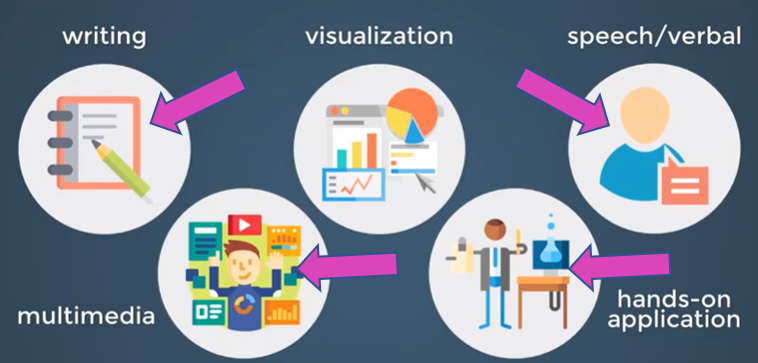Question Chunk 1:
How did the process of designing in a "Backward fashion” work for you? For me it went famously! I’m not new to UbD or Backward Design or Backward Mapping. We learned about that at NYU and I practice that when I design for my classes, so, it’s already in my blood. Working with it in the context of this class was just another exercise.
Was it empowering? It’s always empowering for me. If I didn’t recognize the value of UbD I’d have just used it at NYU then abandoned it in my professional practice. But I do recognize the value and furthermore I’ve seen it work effectively in my classroom!
Annoying? It was counterintuitive at first, but for me, it has not ever been annoying and it was not annoying this time either.
Are you pleased with the final outcome? Yes, I think I created a very strong unit that scaffolds nicely, is accessible, offers students lots of choices, features collaboration and produces several artifacts that students can have for the rest of their lives. It’s a unit that I do in my classroom already, but this process really flushed out some new activities and approaches so yes, I’m very much pleased and I’m also very much looking forward to trying it out next year!
Will you use it again in the future? Yes, I used UbD all the time.
How much synthesis between UbD and UDL did you discover once you truly got into your design process? That was very interesting for me. UDL and accessibility, to the degree we looked at it in this class, is new and I really felt myself thinking about accessibility with each step of the design. I’ve acquired a new sensibility and since I’m super comfortable with UbD I was really able to focus on UDL and the incorporation thereof.
Question Chunk 2:
Are you clear and comfortable with the level (and amount) of Constructivist engagement in the DEMO UNIT DESIGN overall with (A) content, (B) peers, and (C) the environment? Yes, I think so. There is much room for student choice both in the content and in how they show mastery. The content scaffolds logically and both peer and instructor feedback are key elements throughout. There is much collaboration with peer students and the instructor and there is an emphasis on making the environment safe for risk taking which is inherent in creative work.
If so- what do you feel makes it all work so well and if not, what would you like to change and why? I think I covered this in the first response in this chunk.
How did the process of designing in a "Backward fashion” work for you? For me it went famously! I’m not new to UbD or Backward Design or Backward Mapping. We learned about that at NYU and I practice that when I design for my classes, so, it’s already in my blood. Working with it in the context of this class was just another exercise.
Was it empowering? It’s always empowering for me. If I didn’t recognize the value of UbD I’d have just used it at NYU then abandoned it in my professional practice. But I do recognize the value and furthermore I’ve seen it work effectively in my classroom!
Annoying? It was counterintuitive at first, but for me, it has not ever been annoying and it was not annoying this time either.
Are you pleased with the final outcome? Yes, I think I created a very strong unit that scaffolds nicely, is accessible, offers students lots of choices, features collaboration and produces several artifacts that students can have for the rest of their lives. It’s a unit that I do in my classroom already, but this process really flushed out some new activities and approaches so yes, I’m very much pleased and I’m also very much looking forward to trying it out next year!
Will you use it again in the future? Yes, I used UbD all the time.
How much synthesis between UbD and UDL did you discover once you truly got into your design process? That was very interesting for me. UDL and accessibility, to the degree we looked at it in this class, is new and I really felt myself thinking about accessibility with each step of the design. I’ve acquired a new sensibility and since I’m super comfortable with UbD I was really able to focus on UDL and the incorporation thereof.
Question Chunk 2:
Are you clear and comfortable with the level (and amount) of Constructivist engagement in the DEMO UNIT DESIGN overall with (A) content, (B) peers, and (C) the environment? Yes, I think so. There is much room for student choice both in the content and in how they show mastery. The content scaffolds logically and both peer and instructor feedback are key elements throughout. There is much collaboration with peer students and the instructor and there is an emphasis on making the environment safe for risk taking which is inherent in creative work.
If so- what do you feel makes it all work so well and if not, what would you like to change and why? I think I covered this in the first response in this chunk.


 RSS Feed
RSS Feed
